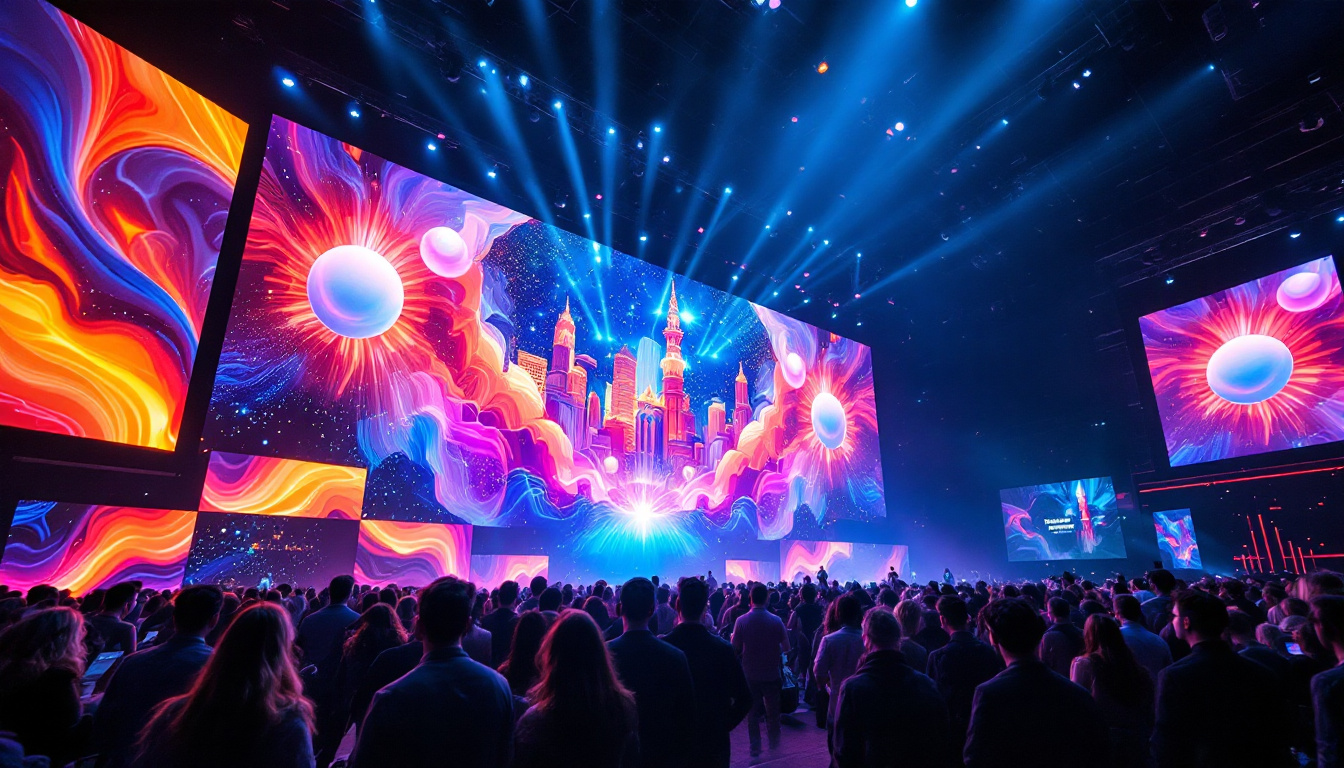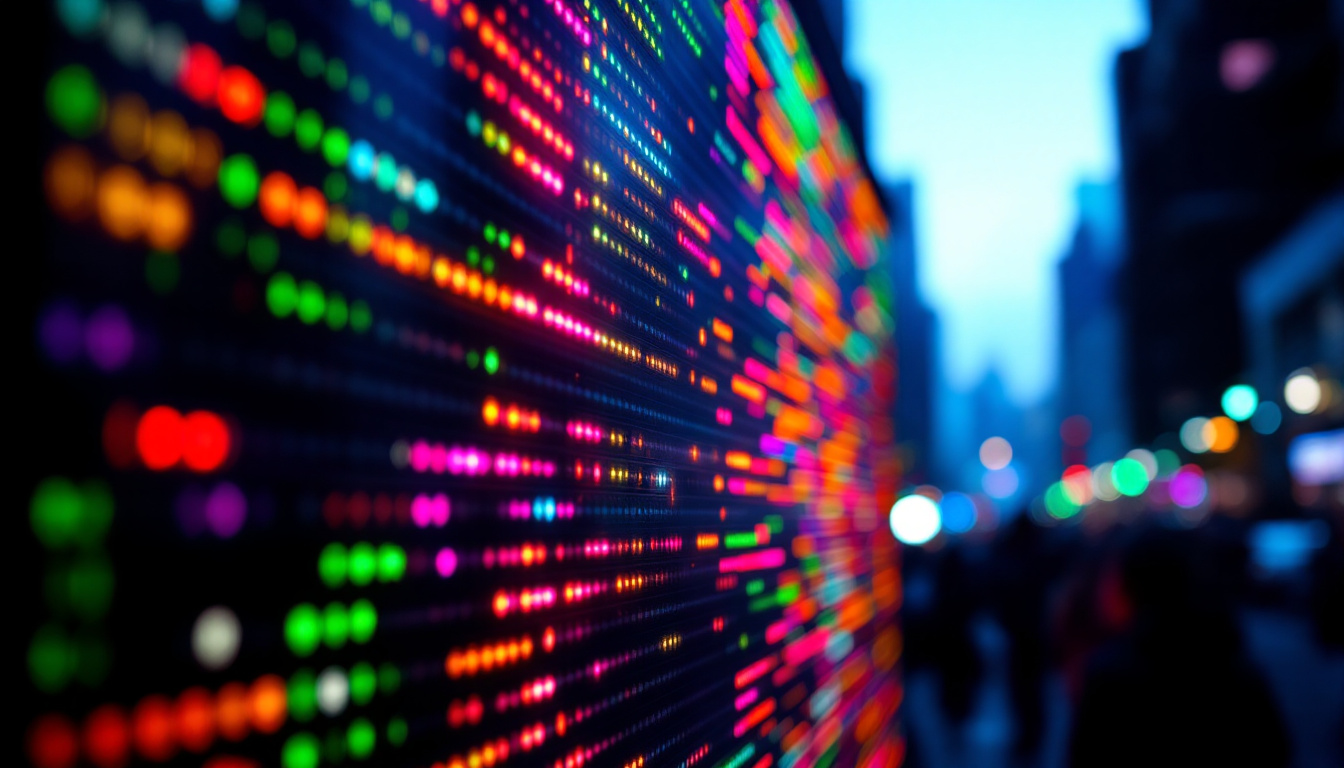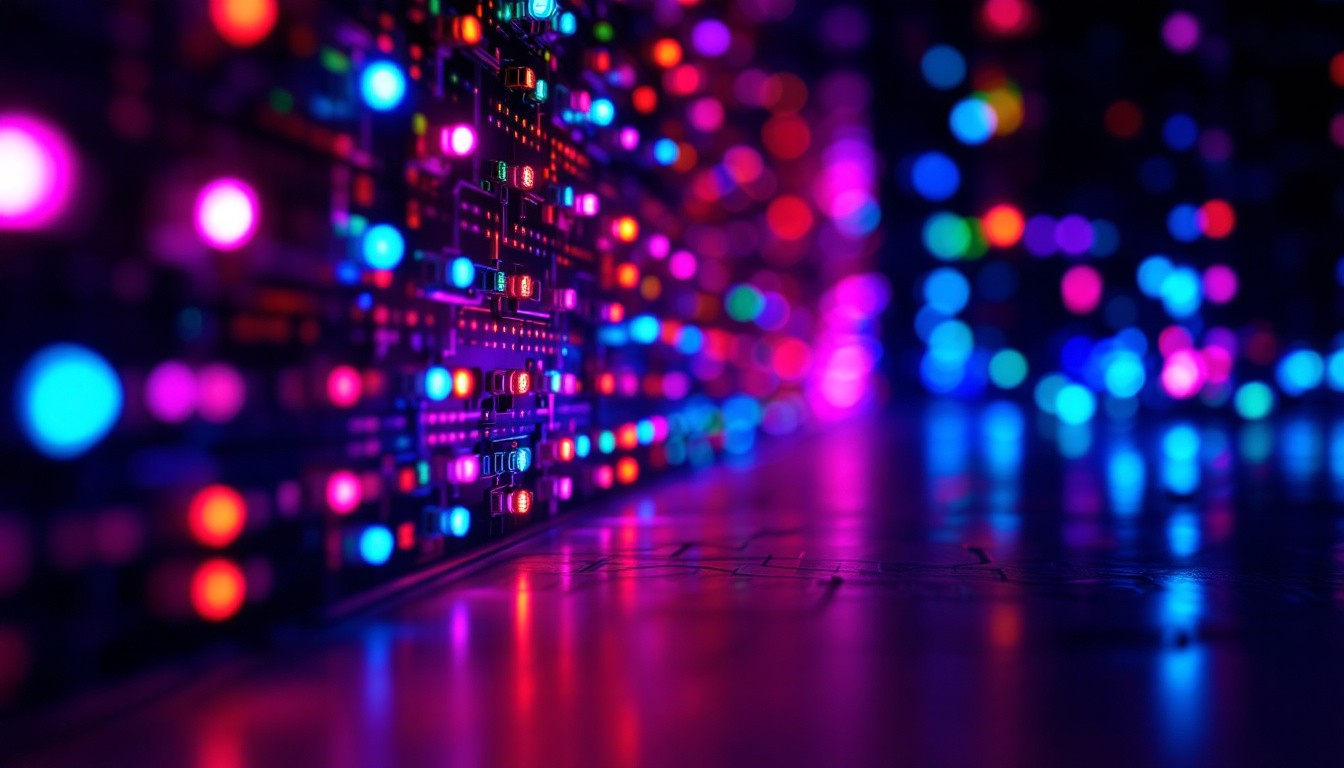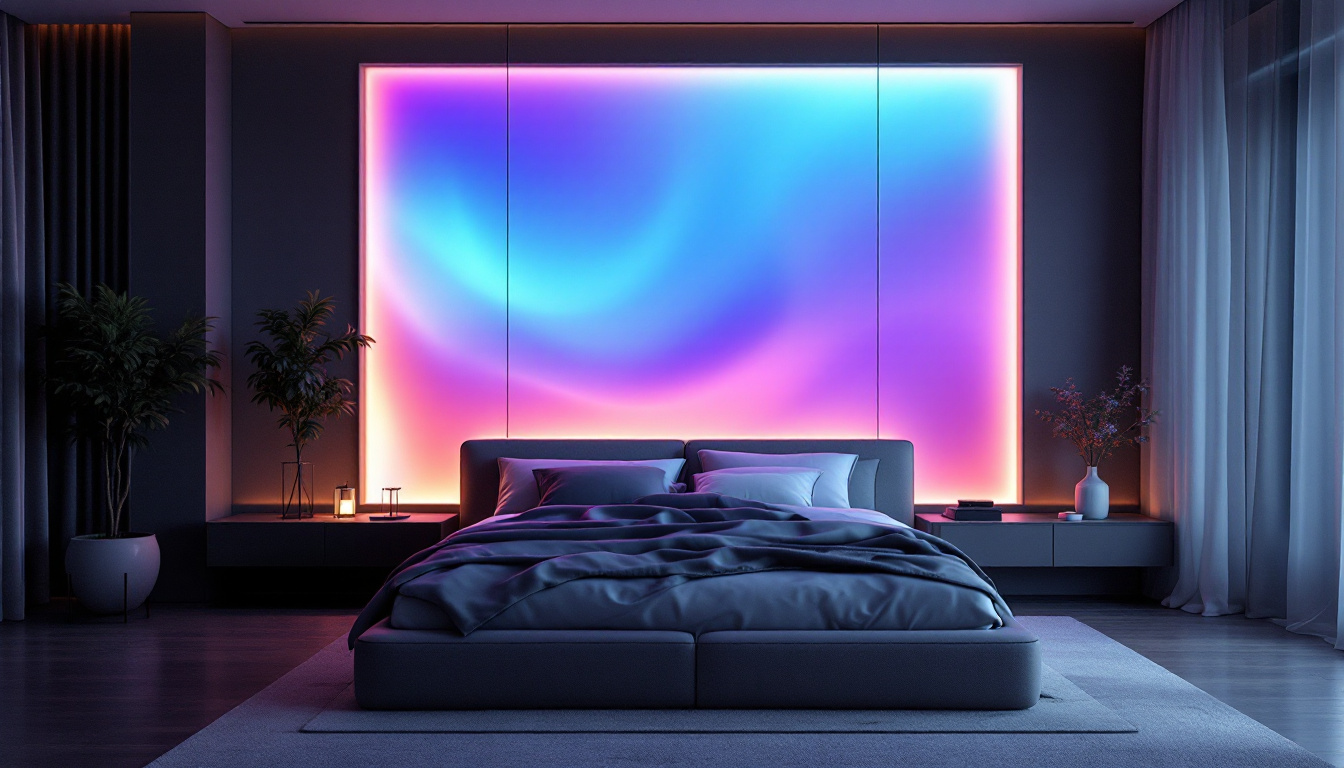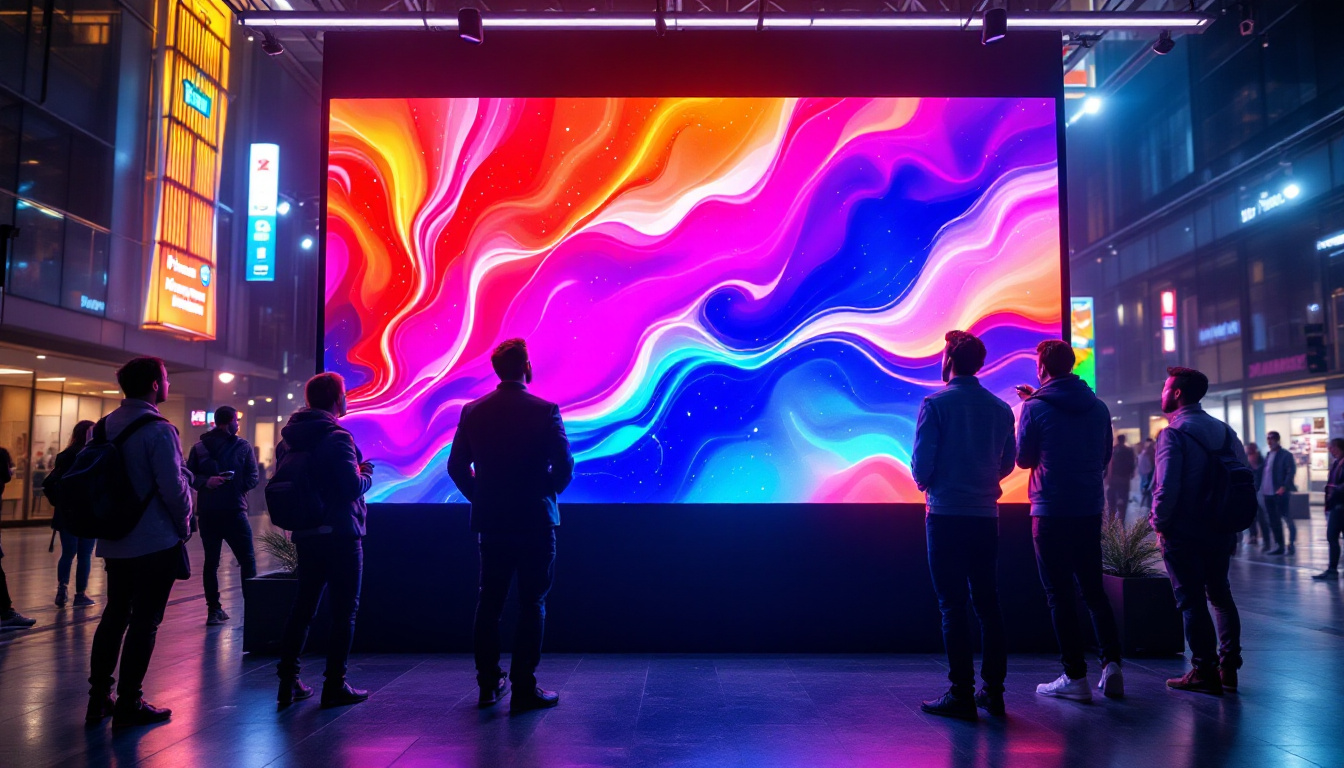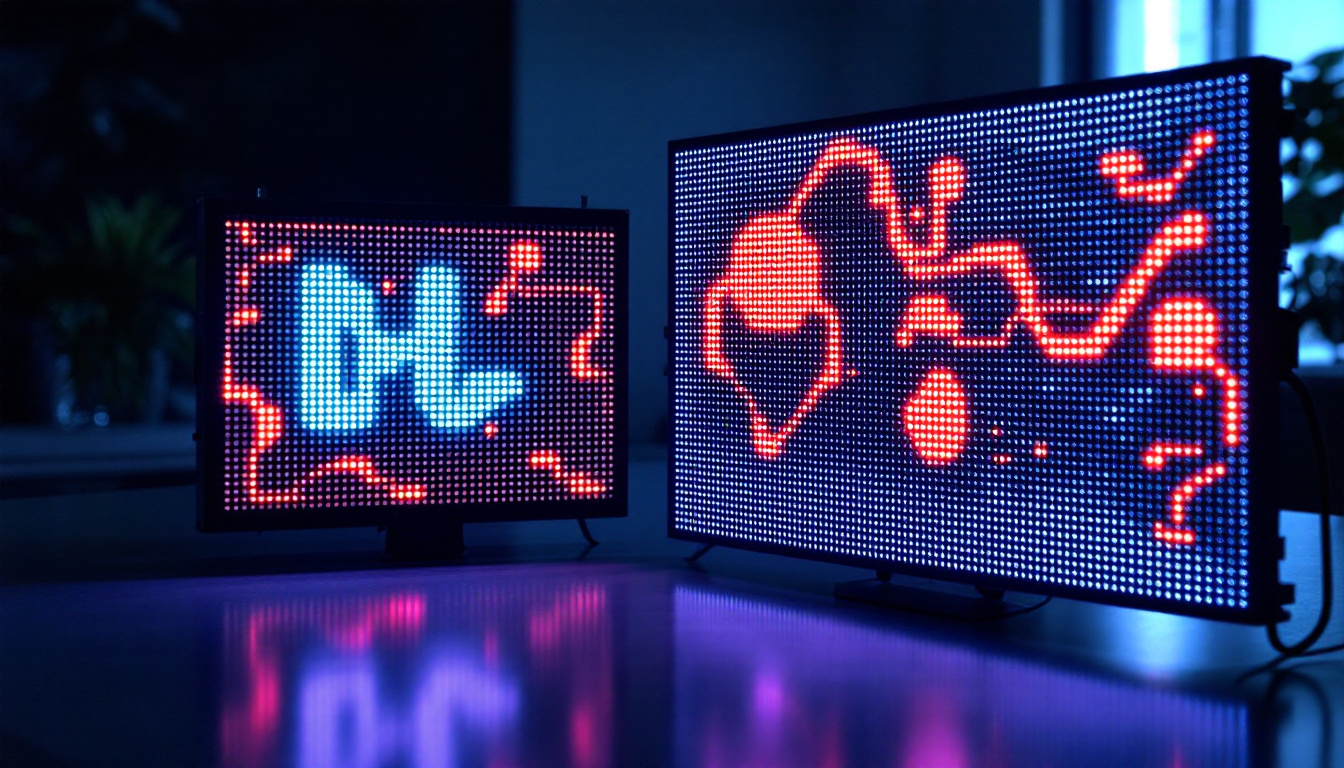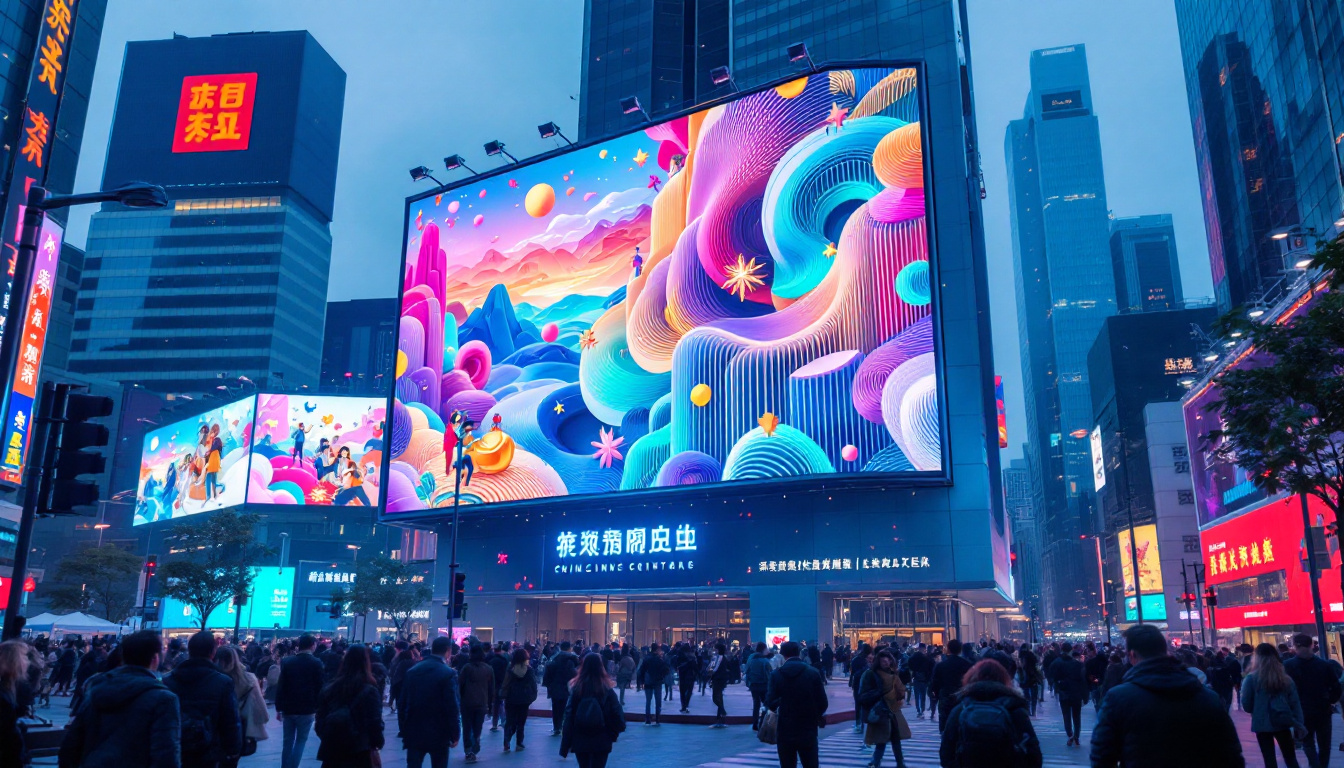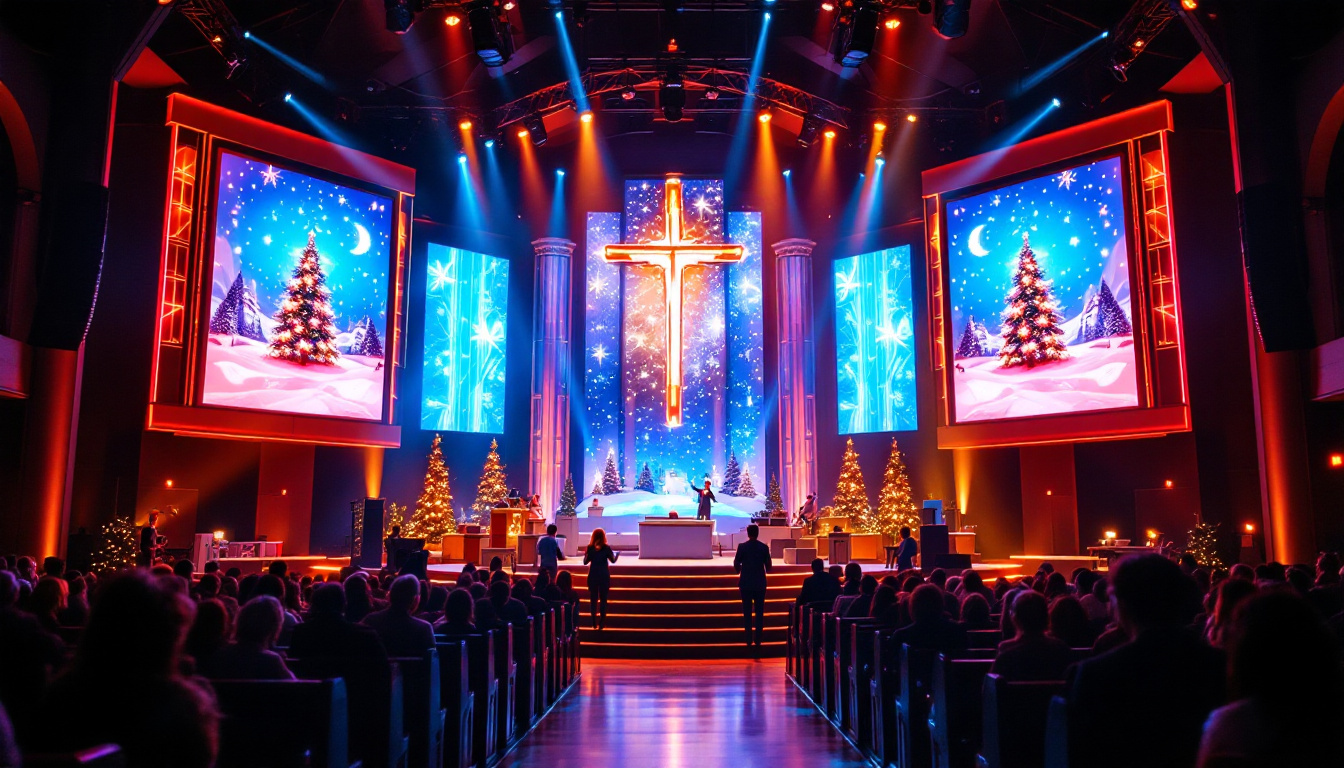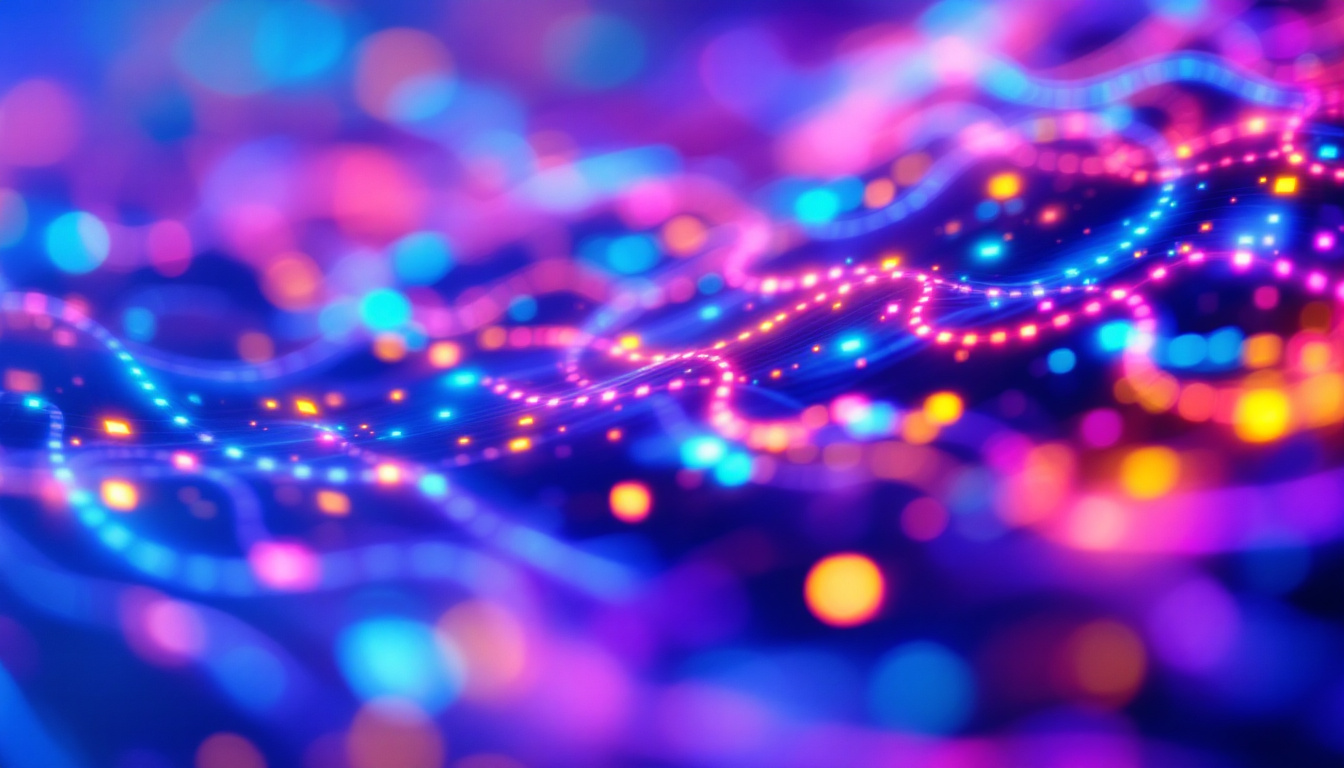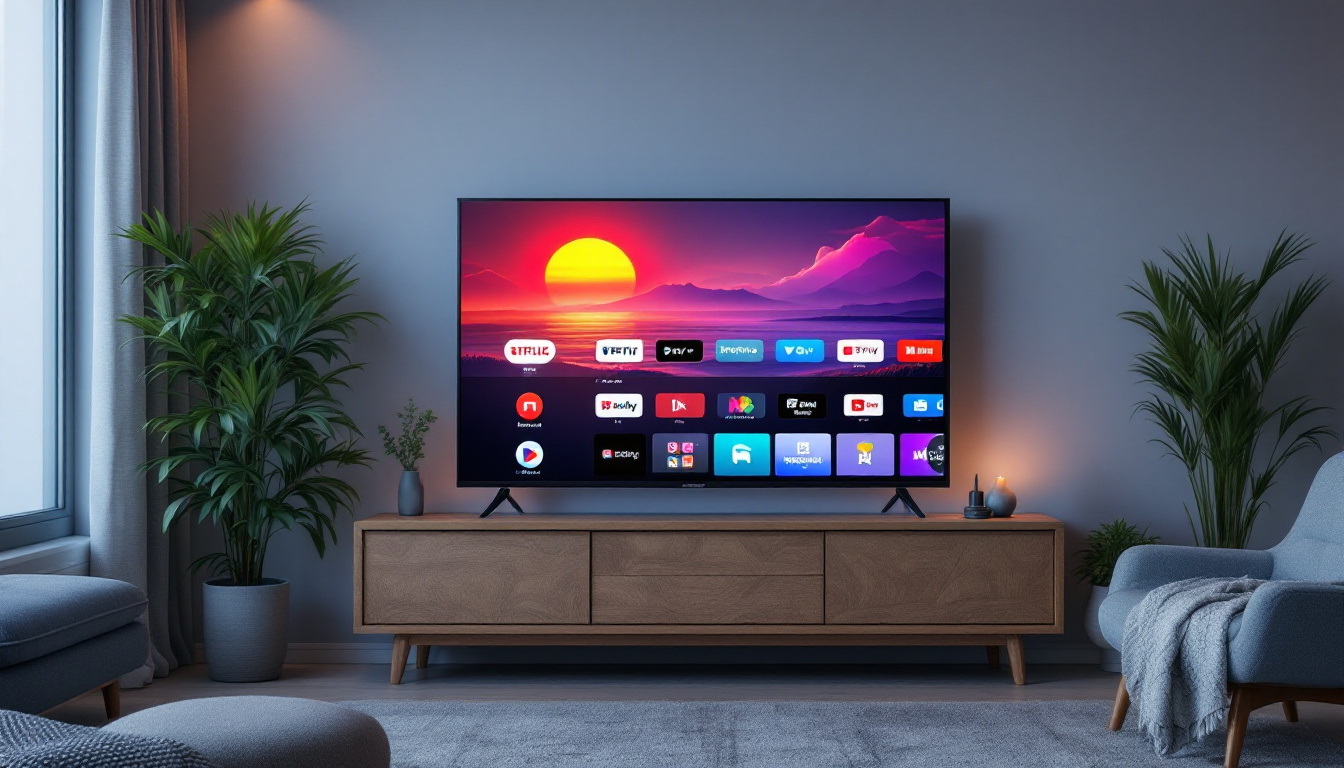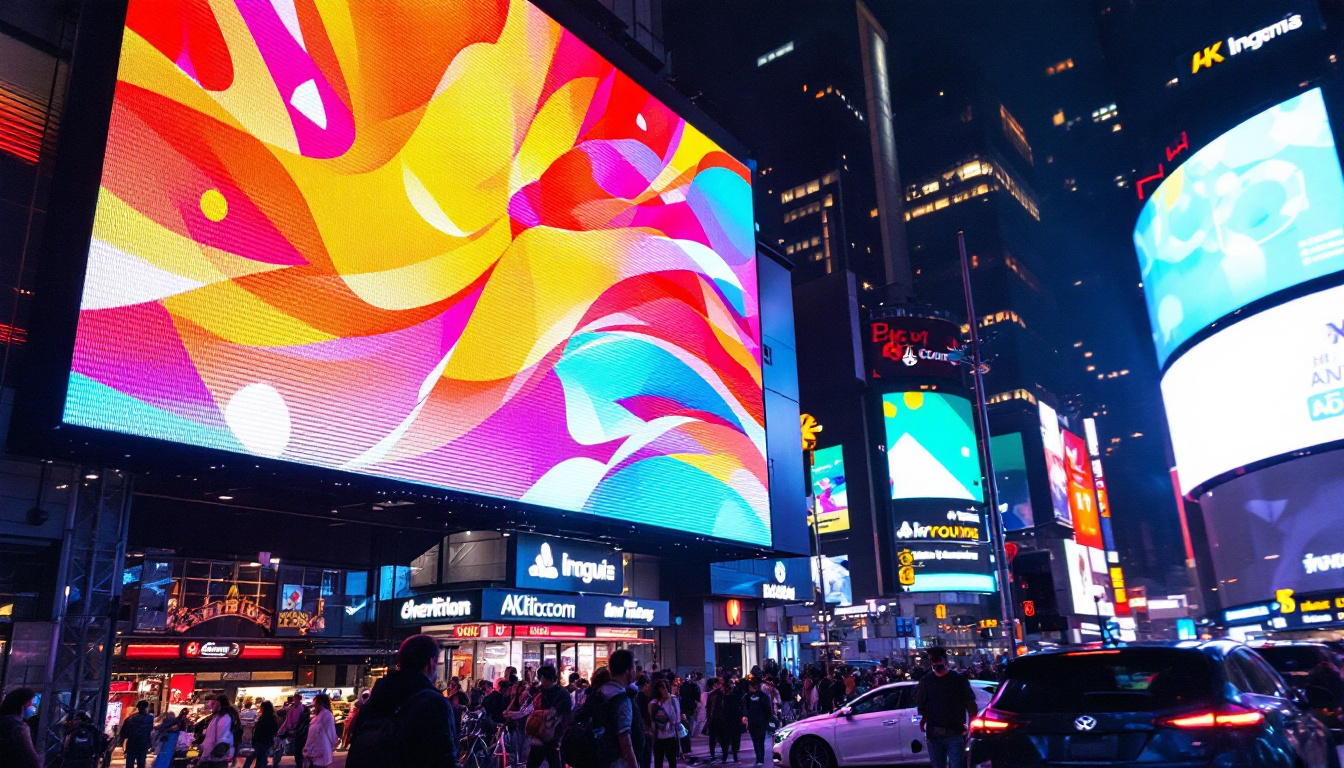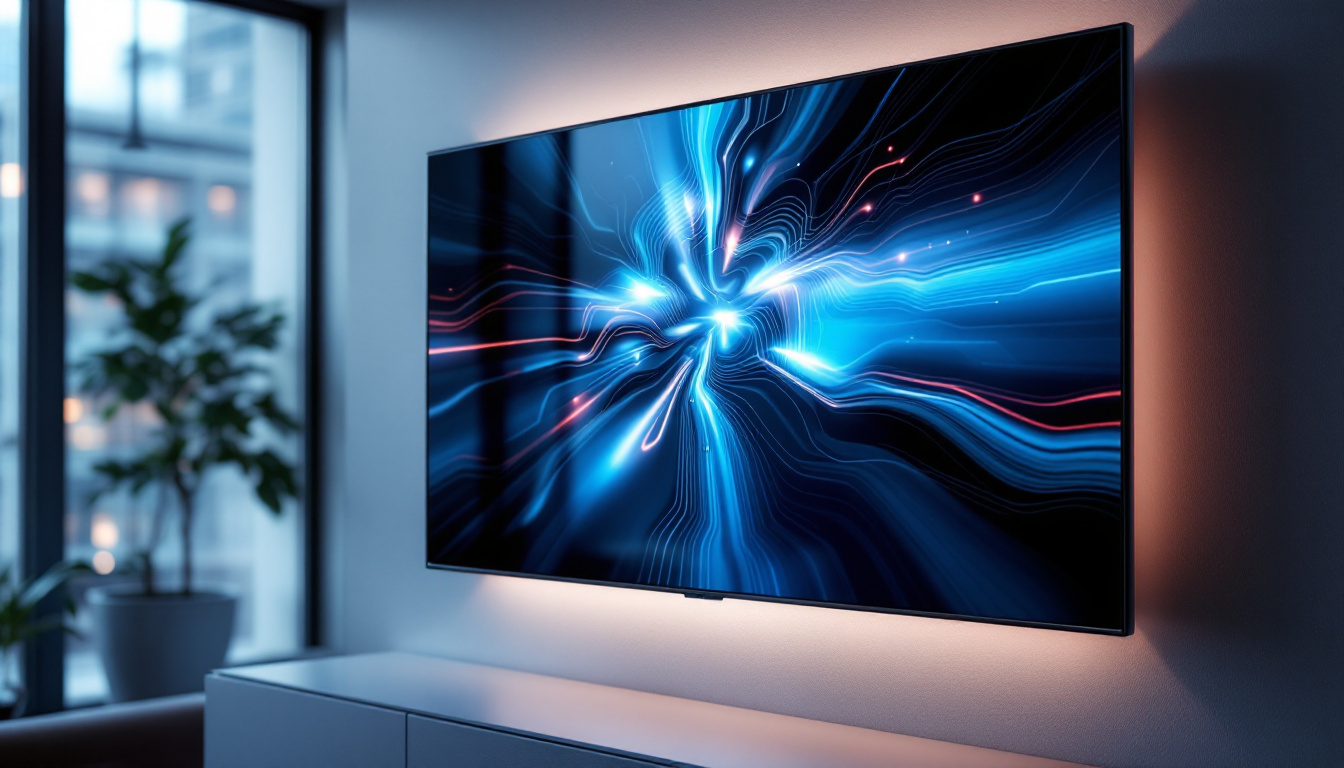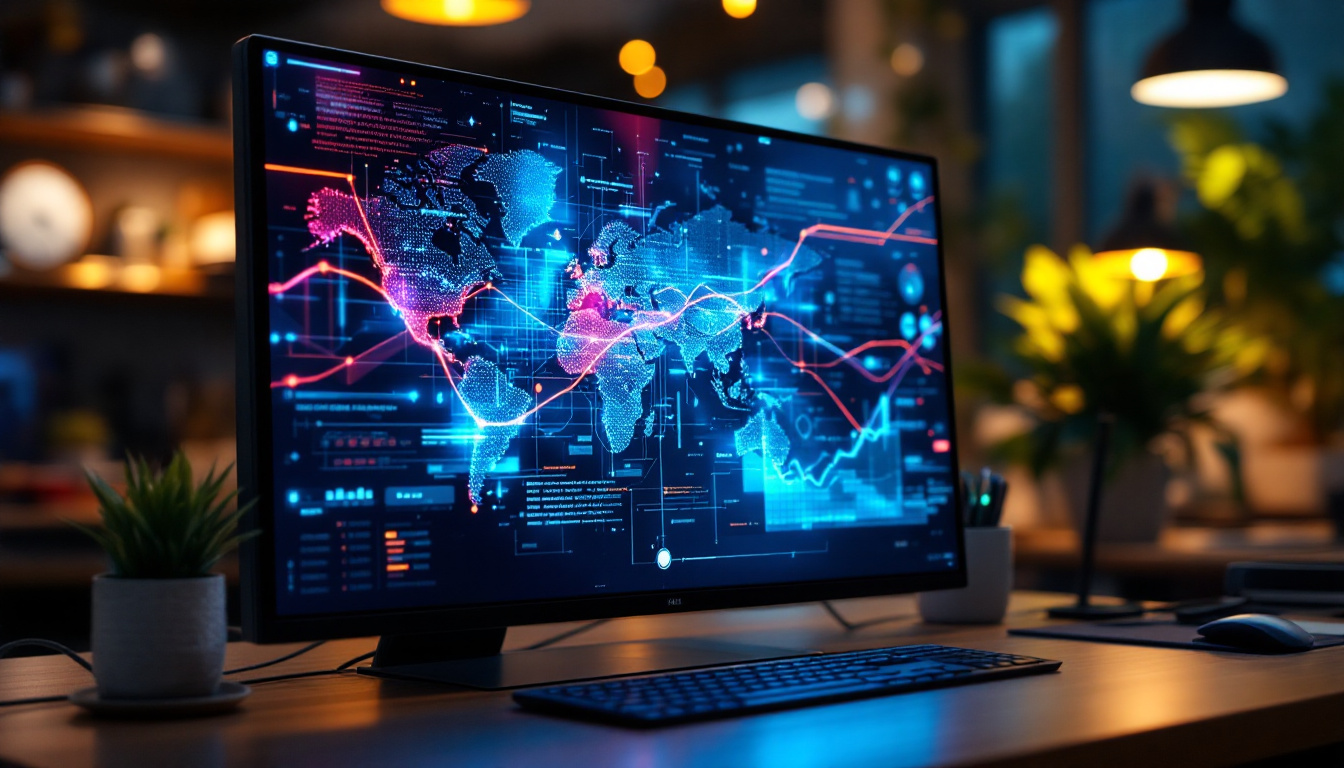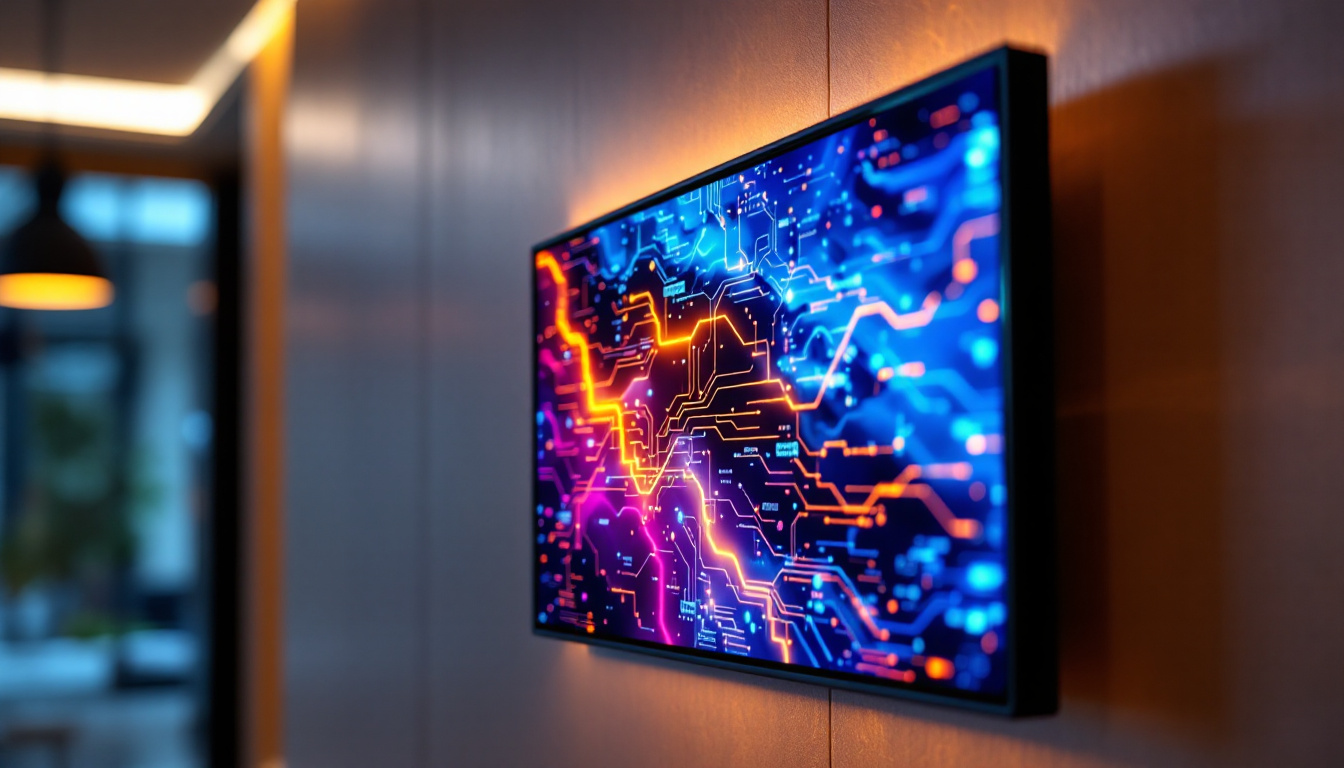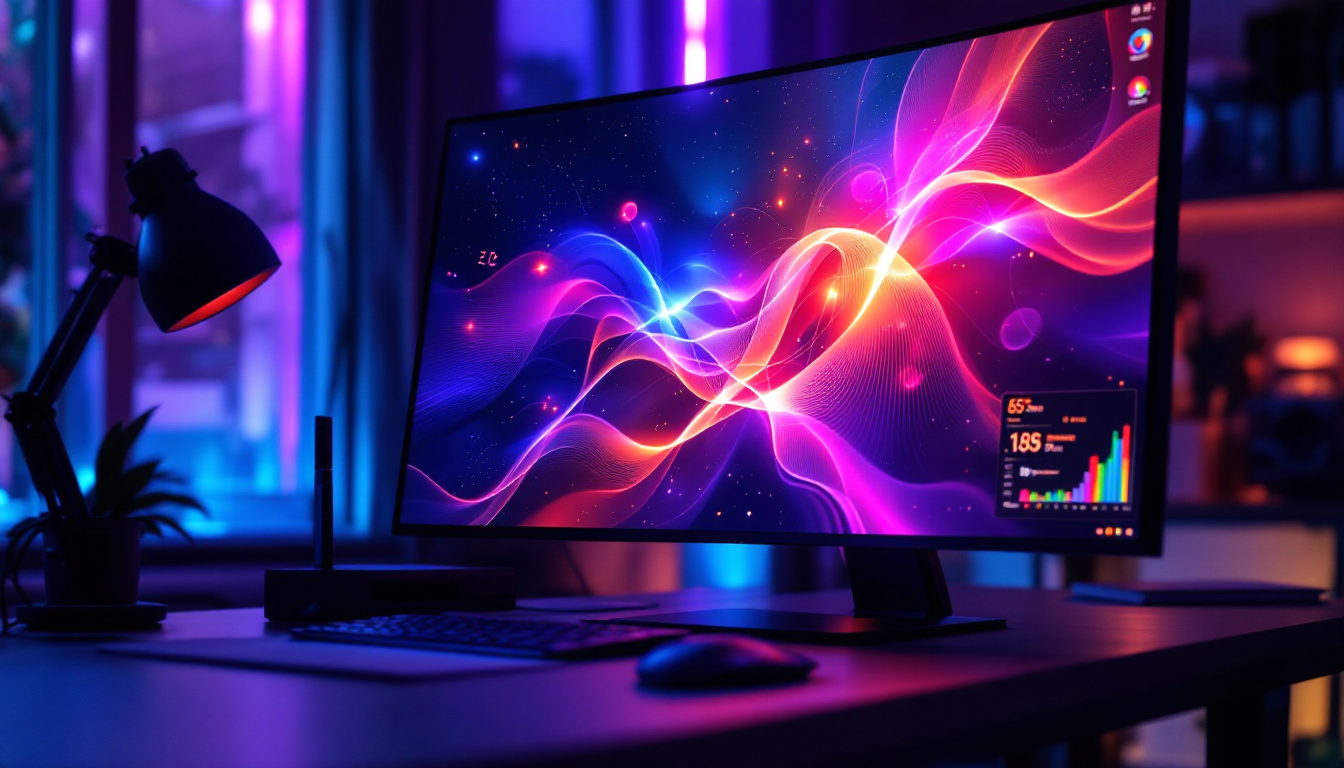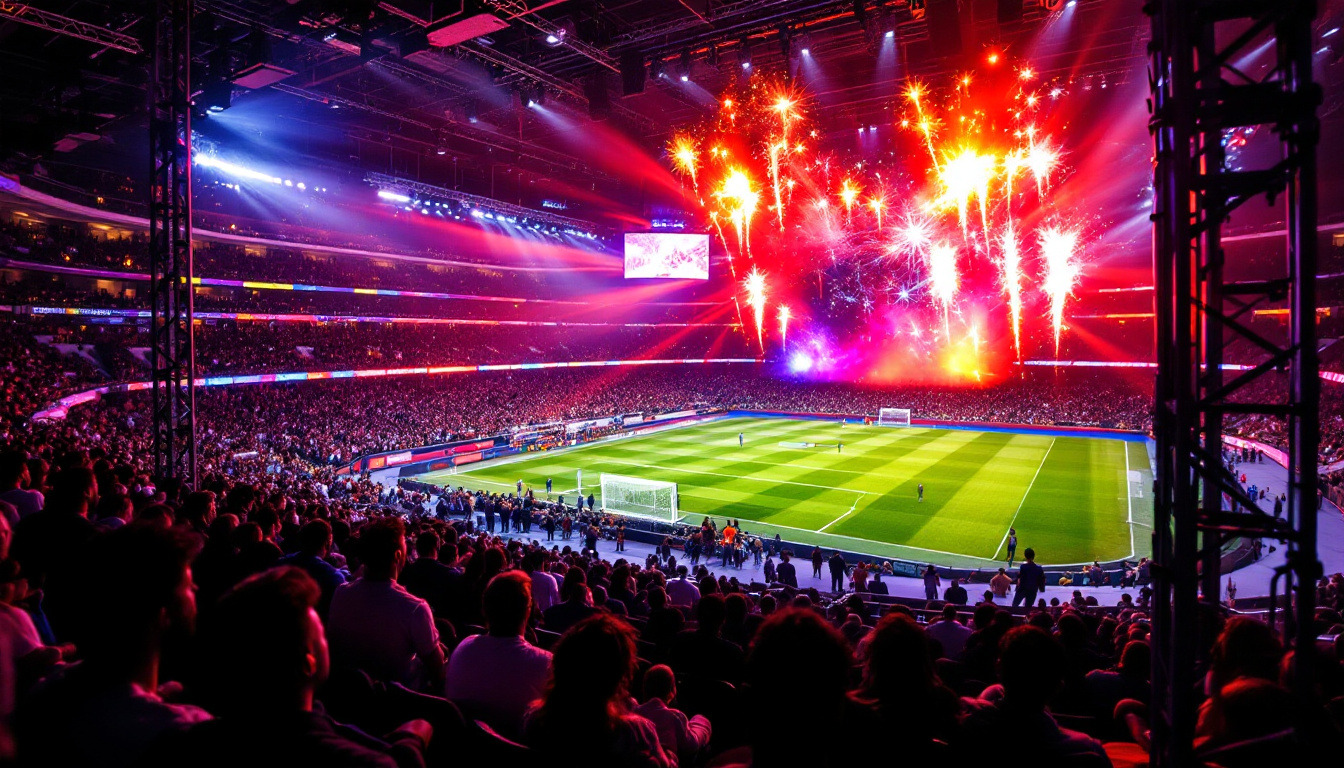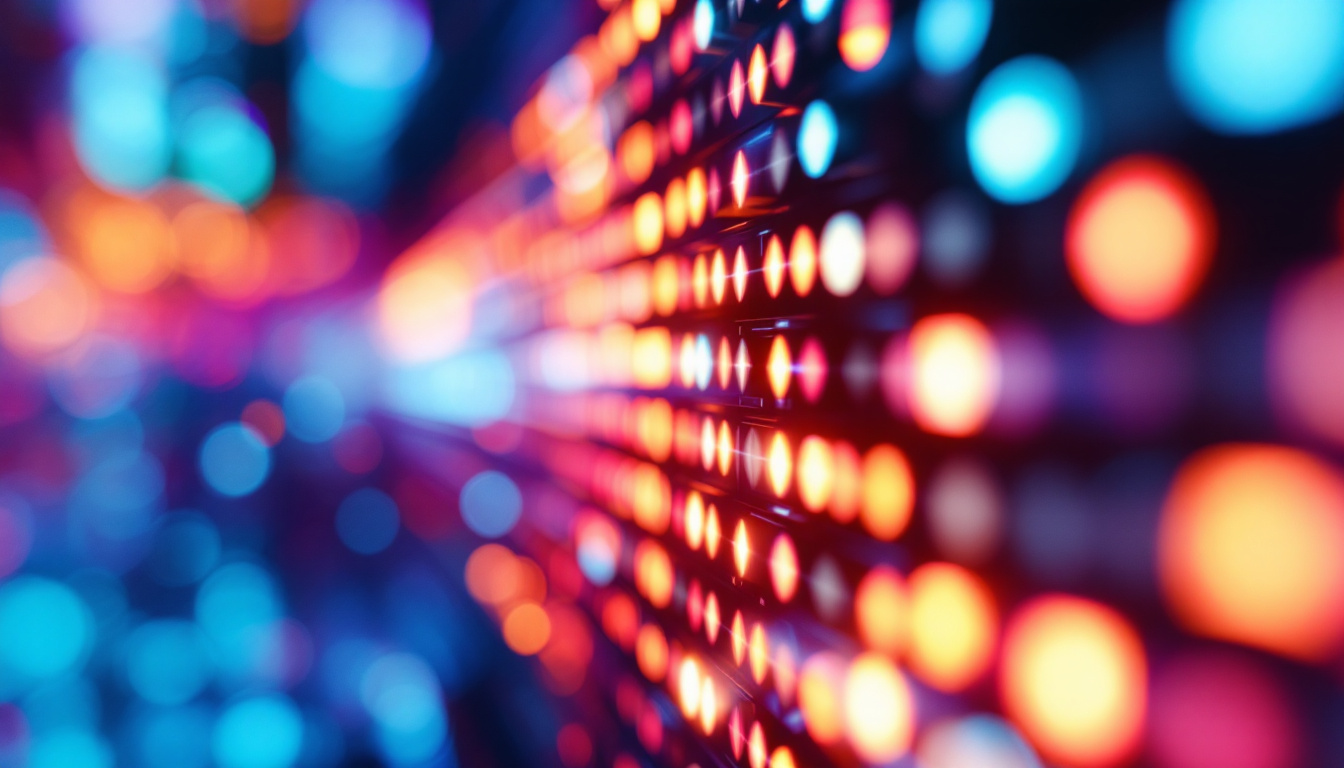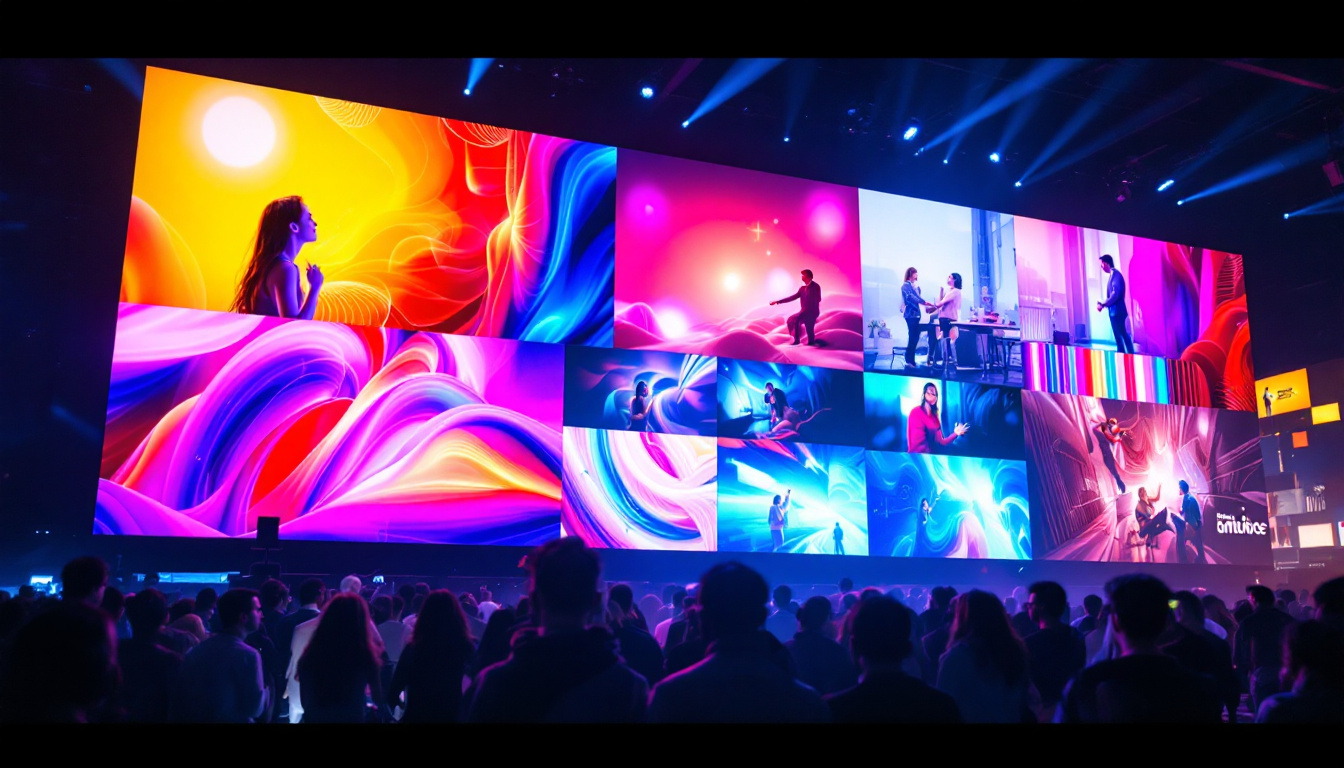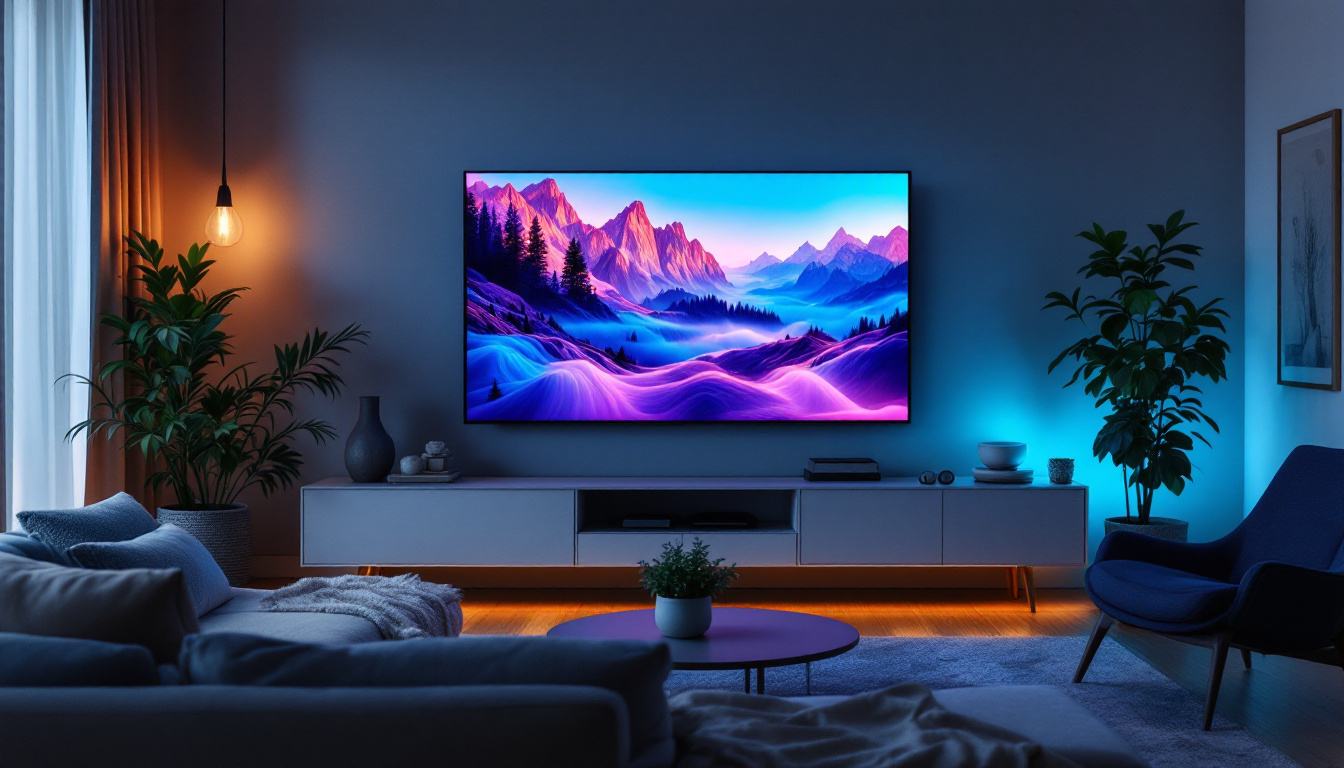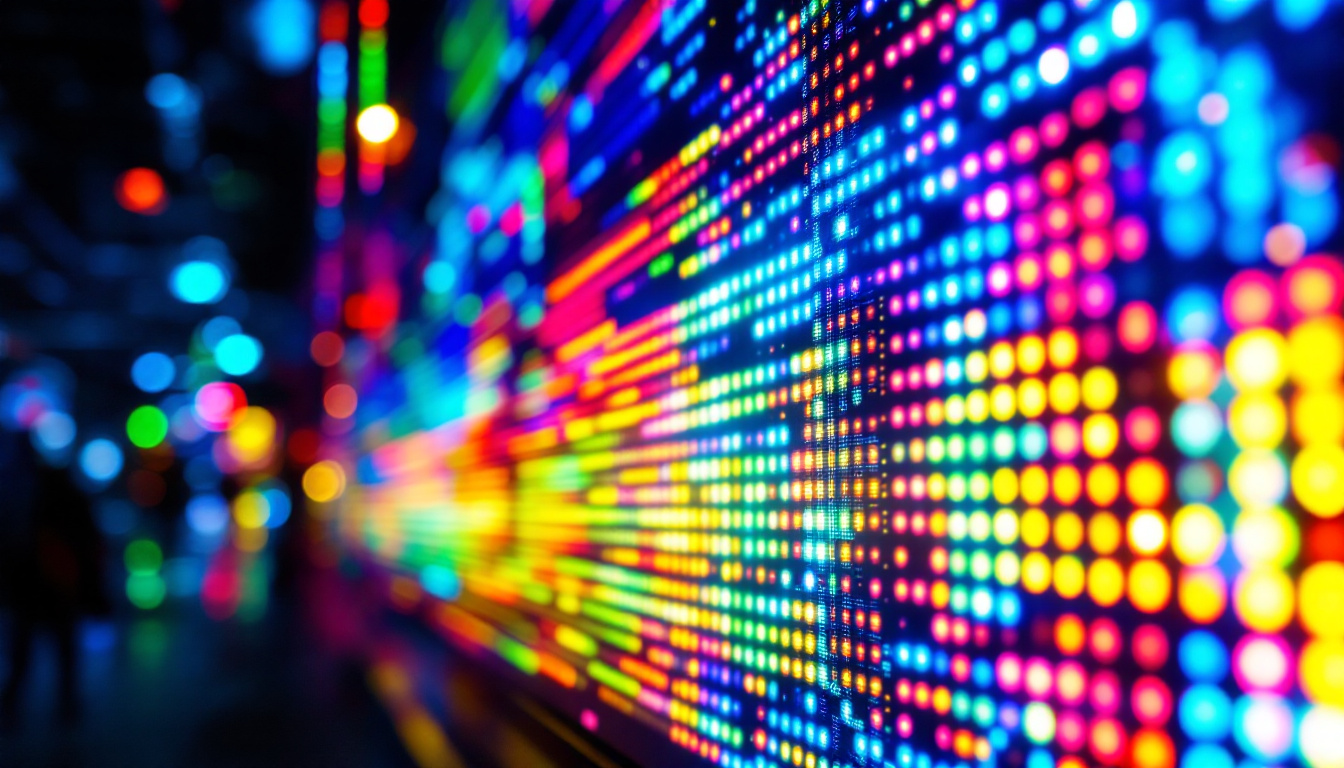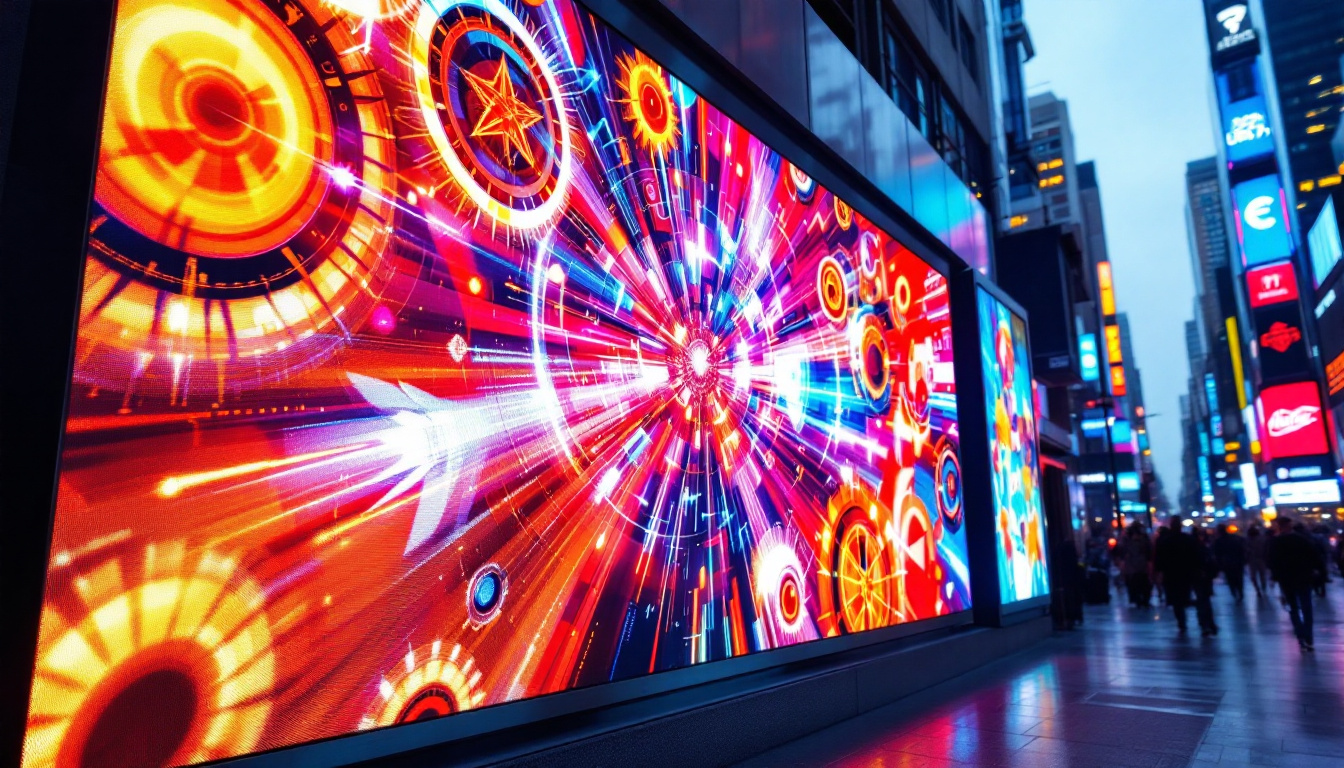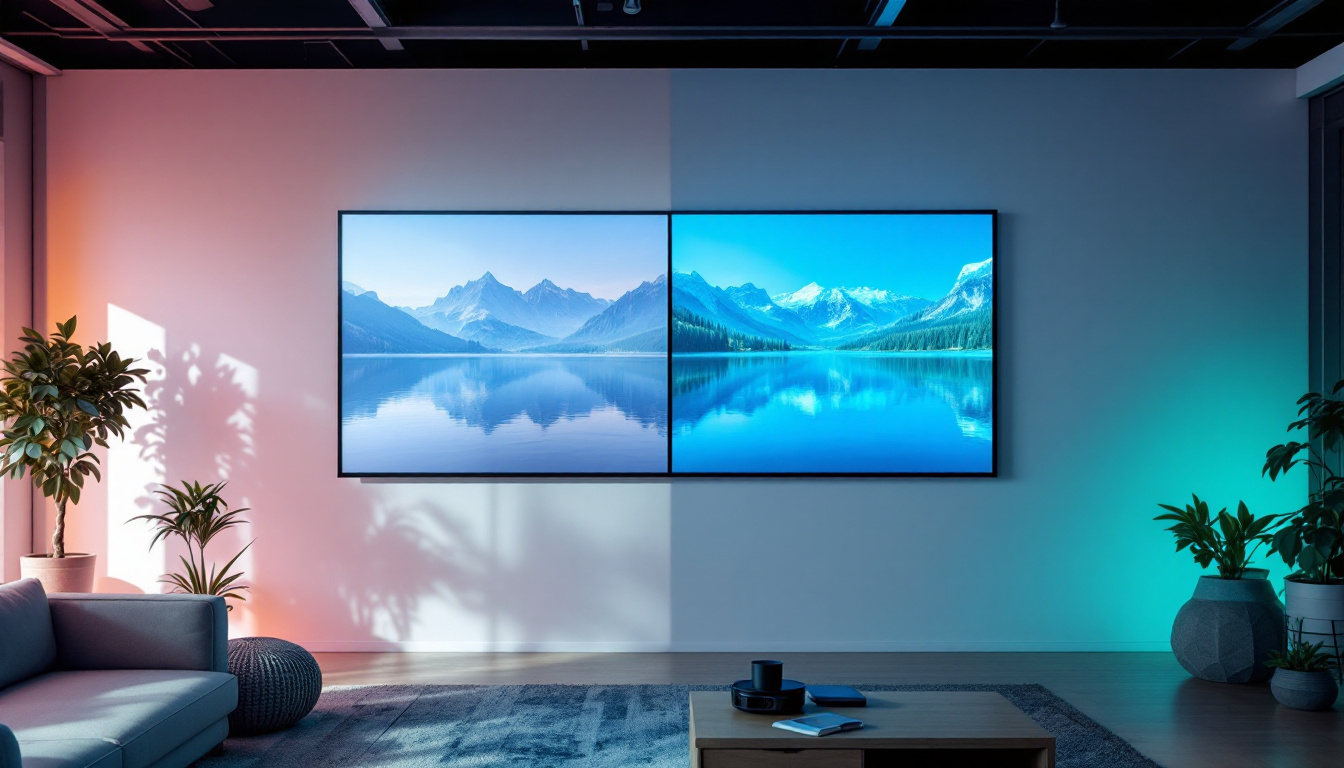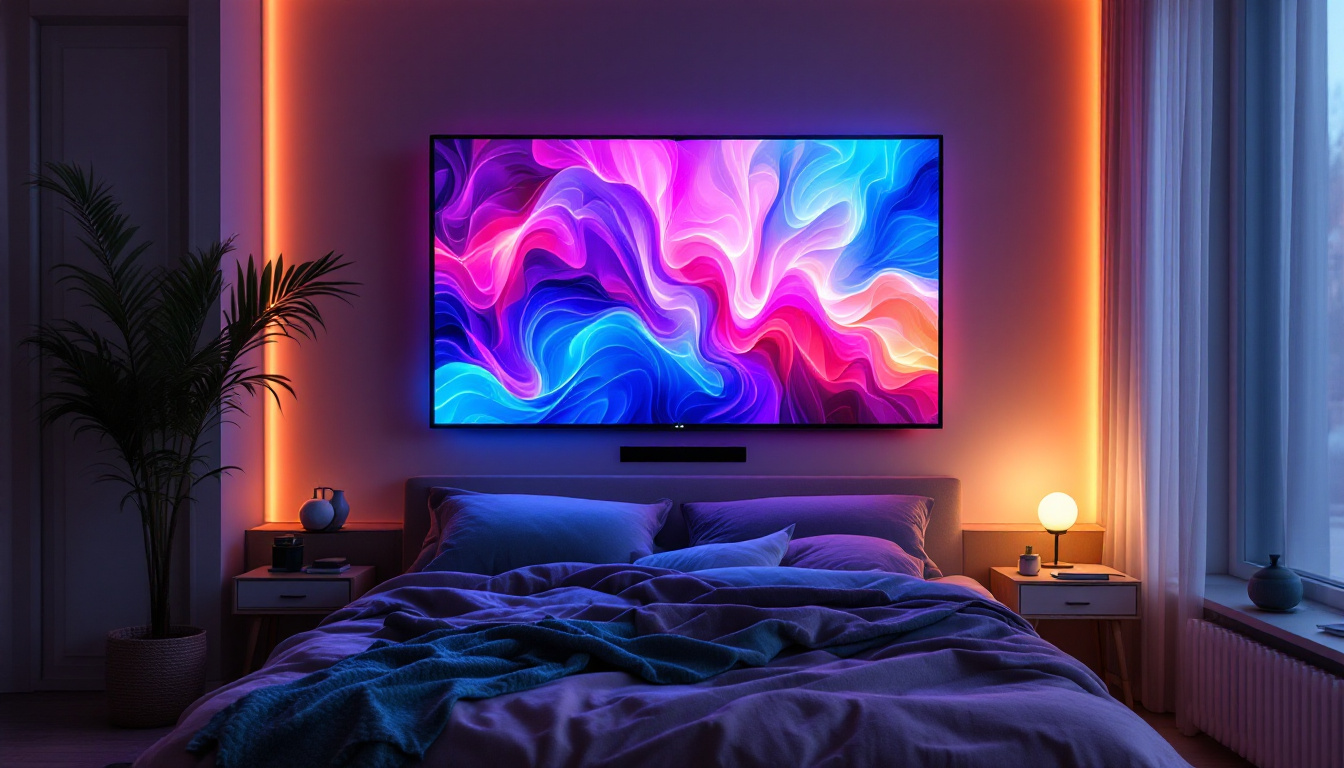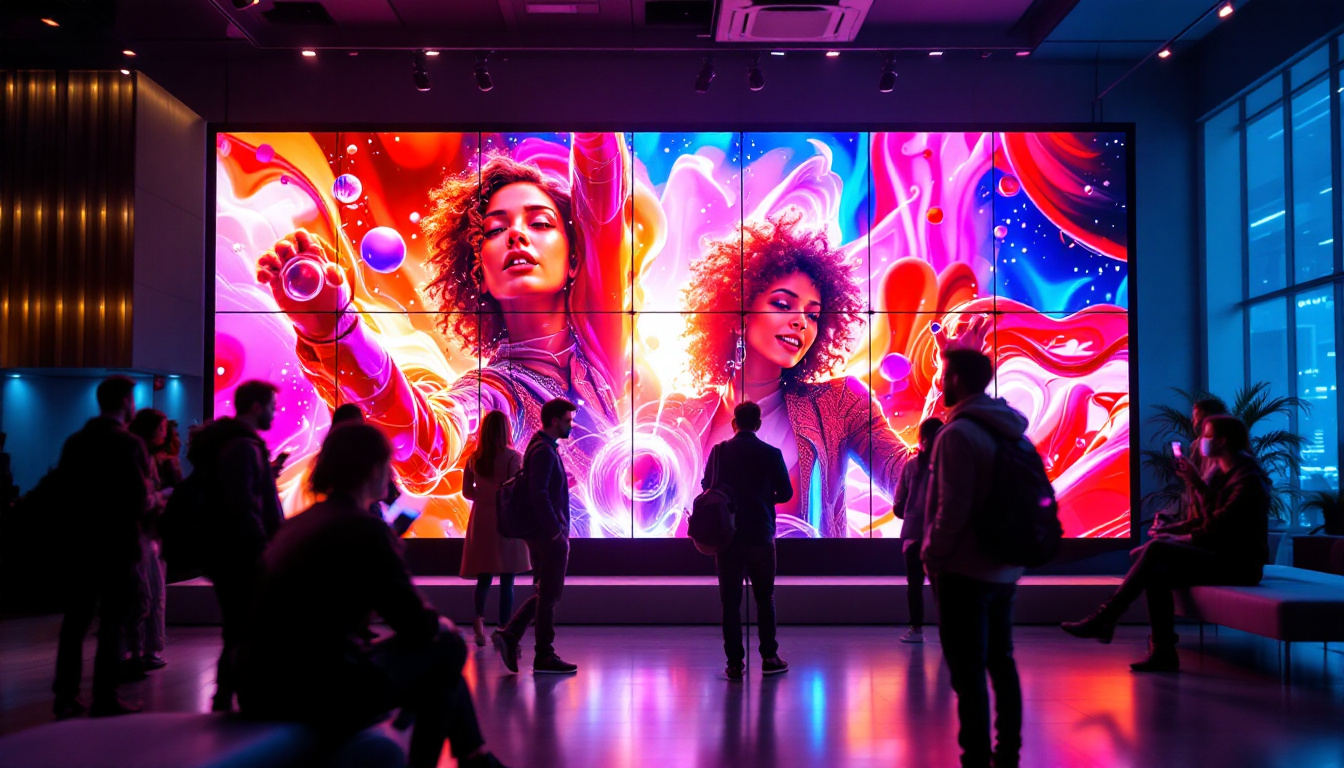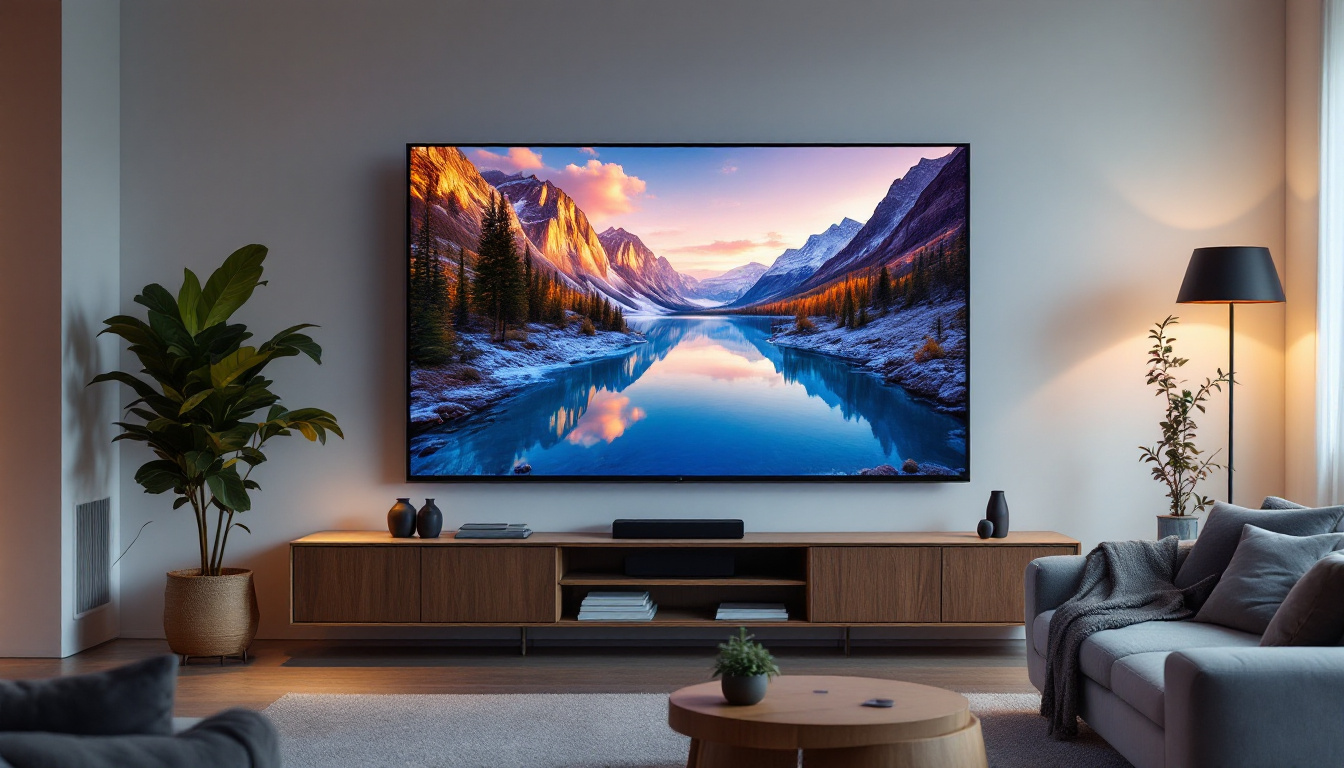In the modern world of conferences and exhibitions, visual communication plays a pivotal role in conveying messages effectively. One of the most significant advancements in this area is the use of LED displays. These vibrant, dynamic screens have transformed the way information is presented, making them an essential tool for event organizers and exhibitors alike. This article delves into the intricacies of LED displays, exploring their technology, advantages, applications, and future trends.
Understanding LED Technology
Light Emitting Diodes (LEDs) are semiconductor devices that emit light when an electric current passes through them. This technology has evolved significantly over the years, leading to the development of various types of LED displays suitable for different applications. Initially, LEDs were primarily used for indicator lights and simple displays, but advancements in technology have transformed them into the backbone of modern lighting and display solutions, revolutionizing everything from home lighting to large-scale advertising.
How LED Displays Work
LED displays consist of numerous tiny LEDs arranged in a grid format. Each LED can emit red, green, or blue light, and by combining these colors in varying intensities, a full spectrum of colors can be produced. This process is known as additive color mixing. The arrangement of these LEDs can vary, leading to different types of displays, such as direct view, backlit, and transparent LED screens. The efficiency of LED technology also allows for lower energy consumption compared to traditional lighting solutions, making them an environmentally friendly option.
The pixels in an LED display are typically measured in terms of pixel pitch, which refers to the distance between the centers of two adjacent pixels. A smaller pixel pitch results in higher resolution and better image quality, making it ideal for close viewing distances, such as at conferences or trade shows. Additionally, the brightness of LED displays can be adjusted based on ambient light conditions, ensuring optimal visibility at all times. This adaptability is one of the key reasons why LED technology has become so prevalent in both indoor and outdoor settings.
Types of LED Displays
There are several types of LED displays available, each designed for specific purposes:
- Indoor LED Displays: These displays are optimized for viewing in controlled environments where lighting can be managed. They typically have a smaller pixel pitch, providing high resolution for detailed graphics and videos. Indoor displays are often used in retail spaces, corporate environments, and entertainment venues, where clarity and color accuracy are paramount.
- Outdoor LED Displays: Built to withstand harsh weather conditions, outdoor LED displays are brighter and have a larger pixel pitch. They are designed for visibility in direct sunlight and can be used for billboards and event backdrops. These displays often feature protective coatings and robust housing to ensure longevity and performance, even in extreme weather conditions.
- Transparent LED Displays: These innovative displays allow light to pass through, making them ideal for retail environments and exhibitions where visibility of the background is essential. By integrating transparent LED technology, businesses can create eye-catching advertisements without obstructing the view of their products or surroundings, merging functionality with aesthetic appeal.
In addition to these types, there are also flexible LED displays that can be bent or shaped to fit unique spaces, enabling creative installations that were previously impossible with traditional display technologies. This flexibility opens up new avenues for artistic expression and advertising, allowing brands to engage with consumers in dynamic and interactive ways. The continuous advancements in LED technology promise even more innovative applications in the future, further enhancing the visual experience across various industries.
Advantages of LED Displays
LED displays offer numerous advantages over traditional display technologies, making them increasingly popular for conference settings.
High Brightness and Visibility
One of the standout features of LED displays is their brightness. They can produce vivid colors and sharp images, even in brightly lit environments. This high visibility ensures that messages are easily seen from various distances, which is crucial during conferences where attendees may be seated far from the screen. Additionally, the high contrast ratios of LED displays enhance the clarity of text and graphics, allowing presenters to convey information without straining the audience’s eyes. This is particularly beneficial in large venues where ambient light can often wash out other types of displays.
Energy Efficiency
LED technology is known for its energy efficiency. Compared to traditional LCD or projection systems, LED displays consume significantly less power, making them a more sustainable choice for event organizers. This not only reduces operational costs but also aligns with the growing emphasis on eco-friendly practices in the corporate world. Moreover, the longevity of LED displays means fewer replacements and less electronic waste, contributing to a greener environment. Event planners can take pride in their choice of technology, knowing that they are making a responsible decision that benefits both their budget and the planet.
Versatility and Flexibility
LED displays can be configured in various sizes and shapes, allowing for creative installations that suit the specific needs of a conference. Whether it’s a large video wall or a smaller display for product demonstrations, the flexibility of LED technology can accommodate a wide range of applications. This adaptability also extends to content delivery; organizers can easily switch between different types of media, such as live video feeds, presentations, and interactive content. Furthermore, the modular nature of LED panels allows for seamless integration into various event layouts, ensuring that the display complements the overall aesthetic and functionality of the venue. With the ability to create immersive environments, LED displays can transform a standard conference into an engaging experience that captivates attendees and enhances information retention.
Applications of LED Displays in Conferences
LED displays have found a multitude of applications in conference settings, enhancing the overall experience for both organizers and attendees.
Information and Wayfinding
During large conferences, attendees often require guidance to navigate the venue. LED displays can be strategically placed throughout the event space, providing real-time information about schedules, speaker sessions, and directions. This not only improves the attendee experience but also helps in managing crowd flow effectively.
Branding and Advertising
For exhibitors, LED displays serve as powerful branding tools. High-quality visuals can attract attention and convey brand messages effectively. Whether it’s showcasing a product launch or displaying promotional videos, LED screens can enhance the visibility of a brand, making a lasting impression on potential clients.
Live Streaming and Presentations
In today’s digital age, live streaming has become an integral part of conferences. LED displays can be used to broadcast presentations, panel discussions, and keynote speeches to both in-person and virtual audiences. This capability not only expands the reach of the event but also engages a broader audience, fostering interaction and participation.
Challenges and Considerations
While LED displays offer numerous benefits, there are also challenges and considerations that event organizers must keep in mind.
Cost Factors
The initial investment for high-quality LED displays can be significant. Event organizers must weigh the benefits against the costs, considering factors such as rental options and long-term usage. However, the return on investment can be substantial, especially when considering the enhanced attendee experience and brand visibility.
Technical Expertise
Setting up and operating LED displays requires a certain level of technical expertise. Event organizers may need to hire specialized personnel to ensure that the displays are configured correctly and function seamlessly throughout the event. This adds another layer of complexity to the planning process.
Content Management
Creating engaging content for LED displays is crucial for maximizing their impact. Organizers must invest time and resources into developing high-quality visuals and videos that resonate with the audience. Additionally, managing the content during the event, especially in real-time, can be challenging and requires careful planning.
Future Trends in LED Display Technology
The LED display industry is continuously evolving, with advancements in technology paving the way for even more innovative applications.
Higher Resolution and Pixel Density
As technology progresses, the demand for higher resolution displays is increasing. Future LED displays are expected to feature smaller pixel pitches, allowing for even greater detail and clarity. This will enhance the viewing experience, particularly for close-up applications where image quality is paramount.
Integration with Augmented Reality (AR) and Virtual Reality (VR)
Augmented and virtual reality technologies are gaining traction in the event industry. The integration of LED displays with AR and VR can create immersive experiences that engage attendees on a deeper level. For instance, LED screens could be used to project interactive content that attendees can manipulate using AR devices.
Smart Displays and IoT Integration
The rise of the Internet of Things (IoT) is influencing the development of smart LED displays. These displays can connect to the internet, allowing for real-time content updates and remote management. This capability can streamline the process of content delivery and enhance the overall efficiency of event management.
Conclusion
LED displays have revolutionized the way information is communicated at conferences and events. Their high brightness, energy efficiency, and versatility make them an invaluable asset for organizers and exhibitors. While challenges such as cost and technical expertise exist, the benefits far outweigh the drawbacks, especially when considering the enhanced attendee experience and engagement.
As technology continues to advance, the future of LED displays looks promising, with trends such as higher resolution, AR integration, and smart capabilities on the horizon. Embracing these innovations will not only improve the effectiveness of visual communication but also set the stage for more dynamic and engaging conferences in the years to come.
Discover LumenMatrix’s Innovative LED Solutions
Ready to elevate your conference experience with cutting-edge LED technology? LumenMatrix is at the forefront of LED display innovation, offering a wide array of solutions that cater to your unique visual communication needs. From Indoor and Outdoor LED Wall Displays to specialized options like Vehicle, Sports, and Floor LED Displays, our products are designed to captivate and engage your audience. Embrace the future of dynamic and immersive presentations with LumenMatrix’s Custom, All-in-One, and Transparent LED Displays. Check out LumenMatrix LED Display Solutions today and transform your event into an unforgettable visual journey.

